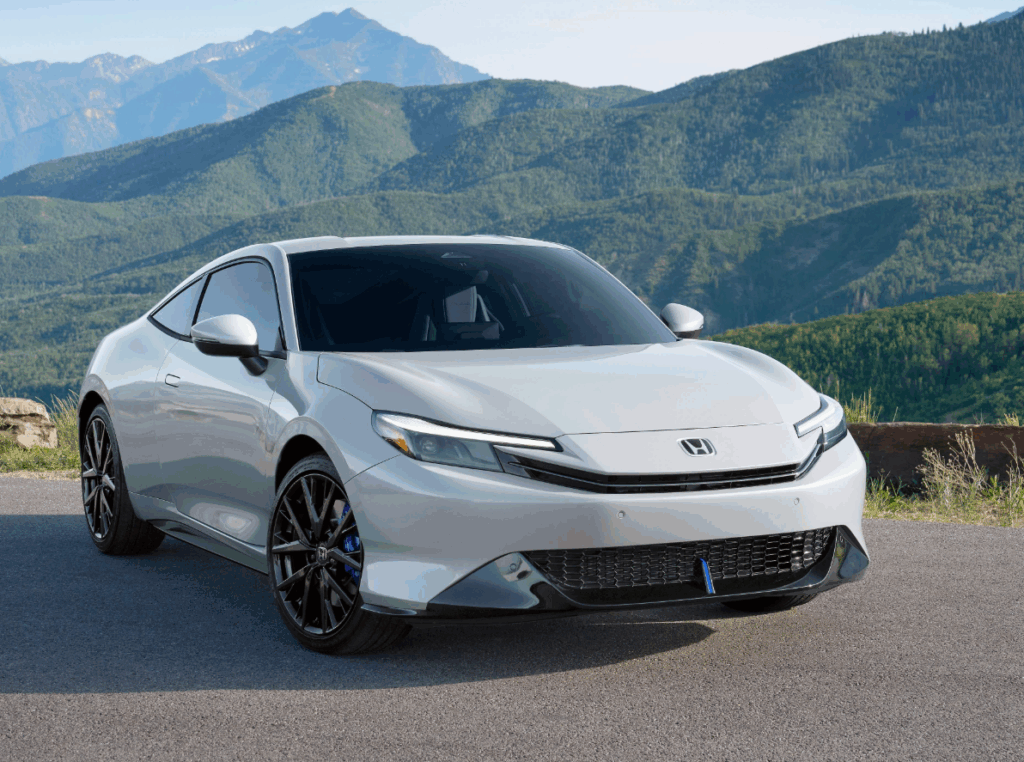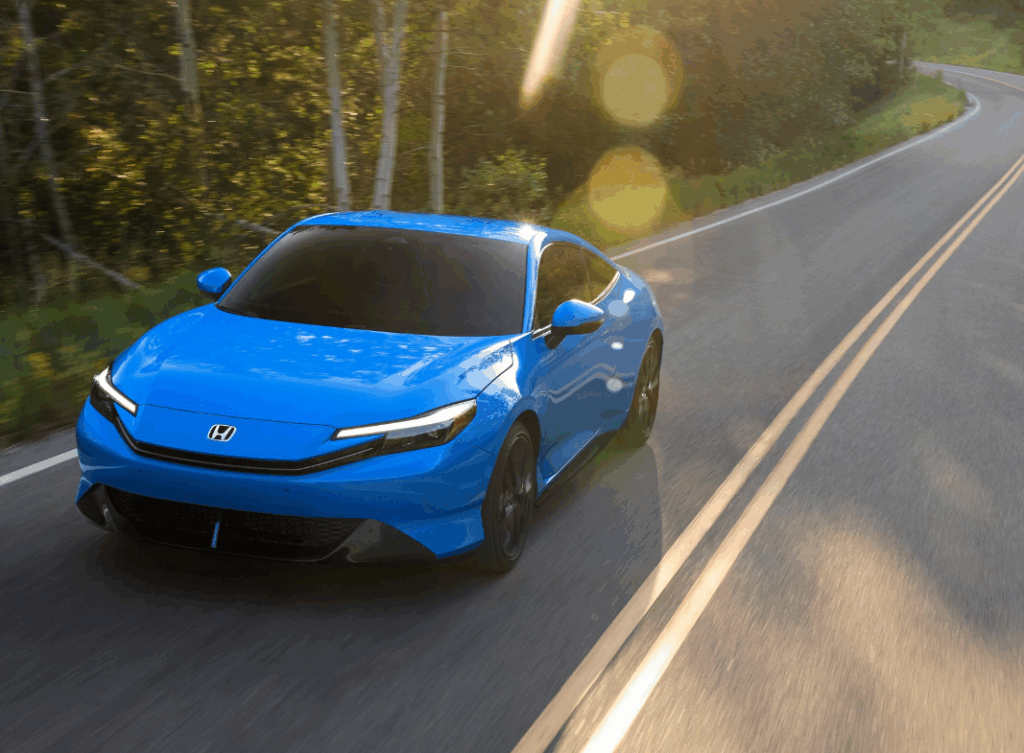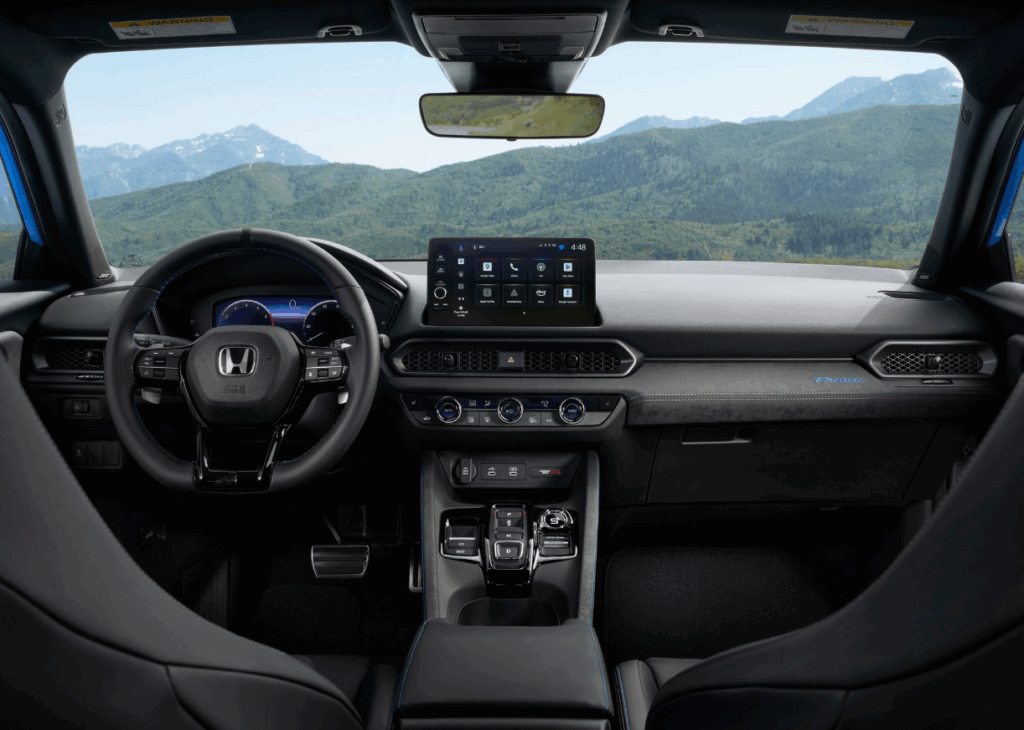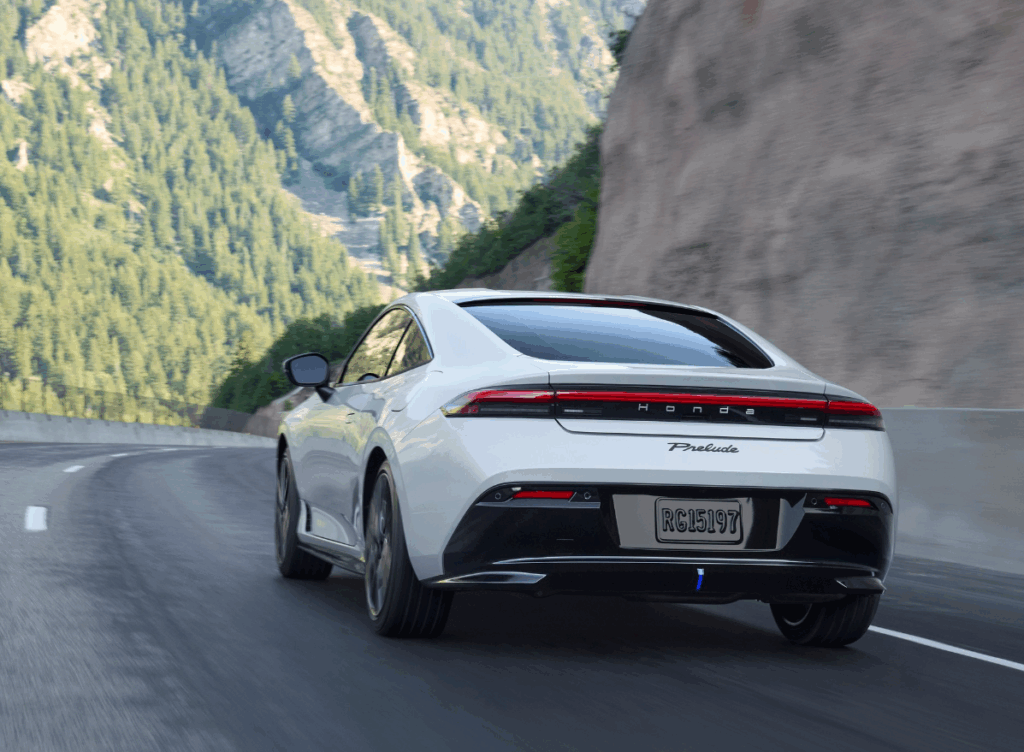2026 Honda Prelude Review: Design, Performance, and Price Details, If you thought the Prelude name was gone for good, 2026 is proving you wrong — and in style. The 2026 Honda Prelude returns not as a throwback relic, but as a modern hybrid coupe that aims to marry sporty flair with efficiency. It’s not trying to recapture the past so much as reinvent what a fun, sleek two-door could be in today’s world.
Exterior
Visually, the 2026 Prelude hits a compelling balance between aggressive and refined. The front fascia is low and purposeful, with slim LED headlights and sculpted air intakes that lend it a purposeful face. The smooth hood flow and flared wheel arches hint at its performance potential. One of the standout touches: pop-out door handles and a liftback profile — this isn’t a simple coupe, it leans toward a sporty hatch shape.
From the side, the car has a compact, muscular posture, with a short overhang and a rising beltline that gives it motion even at rest. The rear is sharp — slim LED taillights, a clean rear hatch, and subtle diffuser accents tie it all together. In some trims, you’ll see Brembo calipers (especially up front) and wider wheels. The overall impression: the Prelude has returned, but evolved.
Interior & Tech & Comfort
Inside, the 2026 Prelude delivers a cockpit that speaks to driver focus without feeling cold. The cabin layout is neat and modern, with quality materials, contrast stitching, and sports-inspired seats up front. The driver’s seat offers firmer bolstering, while the passenger side is a bit more relaxed — a small detail that hints at Honda’s intention to balance comfort and performance.
Tech is contemporary: in many versions you’ll find a 10.2-inch digital instrument cluster paired with a 9-inch touchscreen infotainment system offering wireless Apple CarPlay, Android Auto, and Google integration. Paddle “shifters” are present even though there’s no traditional gearbox — they’re part of the S+ Shift mode system (more on that below). The cabin also features ambient lighting, premium sound (Bose in many trims), and thoughtful storage for daily use.
The rear seats are modest — this is a 2+2 layout. Taller passengers may feel the steep roof slope, but for shorter rides or extra cargo, they’re usable. Cargo access via the liftback helps mitigate the compromise in utility.
Powertrain & Performance
Under the hood, the 2026 Prelude is a hybrid — not a mild one, but a purposeful one. It borrows the hybrid system from the Civic Hybrid: a 2.0-liter four-cylinder engine paired with two electric motors, giving it a combined output of about 200 horsepower and 232 lb-ft of torque. The car remains front-wheel drive.
In performance mode, the system enables a unique driving feel: Honda’s S+ Shift mode simulates shifts and engine behavior. Though there’s no conventional transmission, this mode gives feedback and sound cues to mimic gear shifts. The system even uses rev-matching and downshift blips in S+ mode.
Despite a hybrid setup, the Prelude doesn’t shy from spirited driving. Because it wears chassis components from the Civic Type R — including dual-axis front suspension, adaptive dampers, and wider front/rear tracks — it has handling aspirations you wouldn’t expect in a hybrid coupe. The steering is precise, and torque steer is mitigated by the tuned suspension. Straight-line performance is not its strongest claim, but agility, cornering grip, and driver engagement are where it aims to shine.
Fuel economy is a strength: Honda cites 46 mpg city / 41 mpg highway (U.S equivalent) for the hybrid version. That said, in more spirited driving you’ll see numbers drop — but compared to most sporty coupes, these numbers are respectable.
Here’s a spec snapshot:
| Specification | Value |
|---|---|
| Engine | 2.0L four-cylinder + 2 electric motors (hybrid) |
| Combined Output | ~200 hp |
| Torque | ~232 lb-ft |
| Drive Layout | FWD |
| Transmission | Direct-drive hybrid with S+ Shift simulation |
| 0-60 mph Estimate | Likely in the 6-7 second range |
| Fuel Economy (city/hwy) | ~46 / 41 mpg |
| Seating | 2+2 |
| Cargo | Liftback-style hatch utility |
| Chassis Features | Type R–derived suspension, Brembo front brakes |
Price & Trim Options
Pricing for the 2026 Prelude hasn’t been fully confirmed, but current expectations place the entry price somewhere between $35,000 to $40,000 USD in many markets. In Japan, it’s expected to start around 6.18 million yen (≈ $41,600) for the base model.
Honda is launching multiple trims, with plans to offer enhanced features (e.g. premium sound, more aggressive styling, unique wheels, and aesthetic touches) in higher-end variants. It’s likely that some features, like the simulated shift mode, paddle feel, and premium interior materials, will differentiate the trims.
One notable update: for 2026, Honda has committed to making certain tech features (like Google integration, driving modes, and advanced safety) standard or broadly available — narrowing the gap between base and mid trims. Also, tuning of the S+ Shift and suspension is expected to improve over initial models, based on early feedback.
Safety Features & Driver Assistance
The 2026 Prelude comes with a full complement of Honda’s Sensing suite: automatic emergency braking, forward collision warning, lane-keeping assist, road departure mitigation, adaptive cruise control with low-speed follow, and traffic sign recognition. Higher trims add blind-spot monitoring, rear cross-traffic alert, parking sensors, and a 360-degree camera.
Structurally, Honda has reinforced the chassis for rigidity and crash safety. Multiple airbags, advanced ABS and stability systems, and modern electronic controls underpin its safety credentials.
Why the 2026 Prelude Matters
The 2026 Honda Prelude isn’t just nostalgia — it’s a modern sport coupe that embraces hybrid tech while striving to preserve driver excitement. It doesn’t compete on raw power alone, but on balance: style, grip, handling, and fuel efficiency. In an era when many automakers abandon two-door models, the Prelude’s return is bold.
It also embodies Honda’s push toward electrification without sacrificing personality. The use of Type R underpinnings and the clever S+ Shift mode show that Honda expects enthusiasts to still care about the feel — even if the tech has changed.



